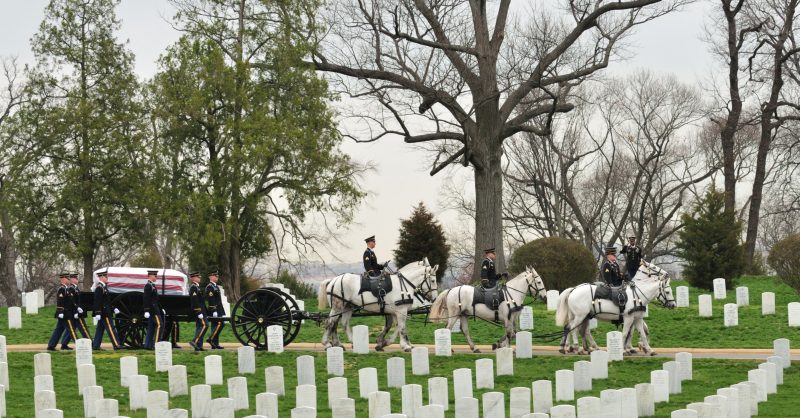It was 1943, on a Pacific Island, when Private First Class James B. Johnson died in the second world war. However, it was only very recently that his body was buried and laid to rest at Arlington National Cemetery where he belongs. It took more than 70 years to locate the missing-in-action marine. Over that time, his family and a non-governmental organization had put forth efforts to find remains of United States service members.
It was last June that the History Flight NGO stumbled on a major discovery. On a small island of Betio in the Tarawa Atoll of the Gilbert Islands, a mass grave was located. It was not far from where the Battle of Tarawa took place on November 20th, 1943 between the United States and the Japanese. More than 1000 Americans died, including Johnson, who was just 19 years old.
Scientists relied on DNA from the Defense POW/MIA Accounting Agency, a group that works in tandem with History Flight. They were able to match the remains of Johnson to a living nephew. The agency confirmed that circumstantial and material evidence coupled with dental records was also used in the identification process.
Mark Noah is the executive director of History Flight. He spoke to CNN. He was all too happy to have the opportunity, “to pay my respects and help close the circle”. He went to Johnson’s burial at Arlington National Cemetery, where the funeral was held with military honors that included a marine firing party shooting three volleys into the air, a Marine band playing at the graveside and a Marine funeral platoon. The surviving relatives of Johnson also were in attendance. This was the chance for closure for which they had waited so long.
A Marine bugler played “Taps”. Then Marine Sargeant Major Joseph Garay took the ceremonial burial flag that was laid over the coffin so he could fold it for presentation to the next of kin, Johnson’s nephew, James. James had given his DNA for the test. He also served in the Special Forces in Vietnam. He is a decorated veteran who had reached out to Noah eight years before to see if the organization had obtained any information on his uncle.
In total, the organization had embarked on 30 missions to the Tarawa Atoll in hopes of identifying and recovering the remains of Marines who were still missing. The Department of Defense (DOD) was helpful in identifying missing military personnel. In 1946 and 1947 the military had tried to recover the remains of U.S. service members from Betio Island. The agency stated at that time that Johnson’s remains were not found.
Finally, last June, History Flight contacted the Department of Defense with information that a burial site on Betio Island had been discovered. Furthermore, they have recovered the remains of what they thought would be 35 United States Marines who valiantly fought in the Battle of Tarawa. There were about 1,000 U.S. Marines and sailors who perished during that battle; another 2,000 were injured.
The military component of the service ended with Johnson’s great-grandnieces, Madeline and Emmerson, releasing doves into the sky; they were just seven and ten years old, but likely will never forget the experience or the story of their war hero Great Uncle.
